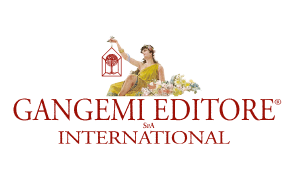Arte sacra futurista: spiritualità e pragmatismo – Piety and Pragmatism: Spiritualism in Futurist Art
Facing English text
Formato: 24 x 30 cm
Legatura: Filorefe
Pagine: 128
Anno edizione: 2007
ISBN: 9788849213102
EAN: 8849213107
UB. INT. : T452E T503C V12e V42d
Contenuto
Nel 1931 viene pubblicato in Italia il Manifesto dell’arte sacra futurista. Dissacrante e tagliente, come sempre, fu presto attaccato per il contrasto con il corrente gusto estetico e per espressioni irridenti la devozione. Pur ribadendo Marinetti l’anticlericalismo, l’attenzione per il sacro rappresenta un allineamento al Concordato fra Stato e Chiesa del 1929. In realtà, l’arte sacra era già praticata da alcuni futuristi, caratterizzandosi per esempi di deciso rinnovamento di un linguaggio ormai obsoleto. Il Futurismo, la cui religione era stata per anni quella del progresso e della macchina, si accorge di essersi spinto oltre i confini del tempo e della materia, là dove solo lo spirito può aleggiare. La Estorick Collection of Modern Italian Art di Londra e il Ministero degli Esteri italiano, anche in vista del Centenario della fondazione del Futurismo (1909), presentano questa mostra, la prima nel suo genere, che consente un’ampia rilettura di questo sviluppo futurista fino ad ora poco studiato e conosciuto, attraverso le opere dei maggiori esponenti del movimento attivi all’epoca, a partire da Giacomo Balla, Fillia e Gerardo Dottori.
The ‘Manifesto of Futurist Sacred Art’ was published in 1931. Irreverent and acerbic, as always, it was swiftly denounced for its radical ideas, which clashed with prevailing tastes. Despite Marinetti’s anticlericalism, Futurist engagement with religious themes was attuned to the 1929 Concordat between Church and State, although in reality certain members of the movement had been creating such works for several years, aiming to modernise an obsolete and anachronistic vocabulary. Futurism – which had initially recognised progress and the machine as its only religions – increasingly felt an impulse to transcend time and matter and to strive for a more spiritual interpretation of modern life.The Estorick Collection of Modern Italian Art and the Italian Ministry of Foreign Affairs present this exhibition – which is the first of its kind – in anticipation of Futurism’s centenary in 2009. It provides a comprehensive overview of this little-studied aspect of Futurist art through works by many of the movement’s major exponents, including Giacomo Balla, Fillia and Gerardo Dottori.
Parole chiave
Condividi su














